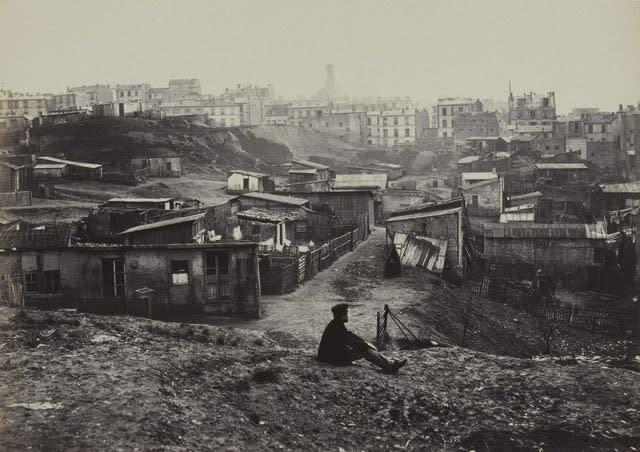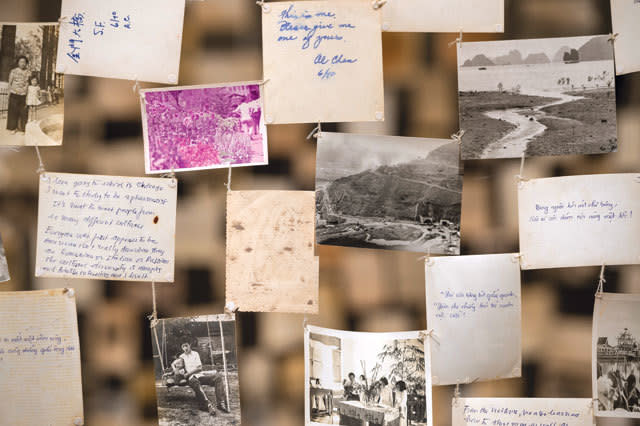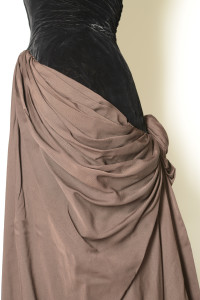Thanks to its 20 museums, each with a carefully curated line-up of dynamic exhibitions and events, you could spend a lifetime going from gallery to gallery. Exhibitions, on the other hand, are fleeting. Herewith, a guide to upcoming shows you really can’t afford to miss.
Clik here to view.

Charles Marville: Photographer of Paris
Museum of Fine Arts, Houston
June 15–Sept 14
Everyone knows Eugène Atget’s sepia-toned photographs of fin-de-siècle Parisian boulevards. But what did the city look like before the boulevards, which were built in the mid-nineteenth century by Napoleon III’s handpicked engineer Baron Haussmann? Charles Marville, the city’s official photographer in the early days of the medium—the daguerreotype was invented in 1839—carefully documented the narrow medieval streets and tightly packed buildings that were destroyed to make way for the modern Paris we know today. Also included are Marville’s photographs of French and German landscapes.
Texas Sculpture Group 2014: A Panoramic View
Lawndale Art Center
Aug 22–Sept 27
Curated by renowned East Texas–born sculptor James Surls, this exhibition features a diverse array of multimedia sculpture—ranging from bronze casting to video performances, from site-specific installations to yarn bombing—from dozens of contemporary Texas artists. The exhibition is dedicated to the memory of iconic Houston artist Bert Long Jr., who died last year at the age of 72.
Clik here to view.

Dinh Q. Lê: Crossing the Farther Shore
Rice Gallery
Thru Aug 28
After his family emigrated from Vietnam in 1979 during the country’s post-war chaos, Lê grew up in Southern California, only to return to Ho Chi Minh City (formerly Saigon) when he was 28 to become an artist. For this site-specific installation, Lê stitched together photographs of ordinary life in wartime Vietnam, which he found in local antique shops, to form delicate, hanging rectangular structures. The backs of the photographs feature handwritten recollections of Vietnam from Vietnamese-Americans, as well as excerpts from the Vietnamese epic poem The Tale of Kieu.
The Kinsey Collection
Houston Museum of African American Culture
Aug 2–Oct 26
The Kinsey Collection is one of the world’s largest private collections of African American art, artifacts, and documents. Spanning 400 years of history, the collection includes slave shackles, correspondence between Malcolm X and his biographer Alex Haley, a first edition of Phillis Wheatley’s 1773 book of poems, and an original 1857 printing of the Supreme Court’s notorious Dred Scott decision, which stoked abolitionist anger and helped precipitate the Civil War.
Experiments with Truth: Gandhi and Images of Nonviolence
Menil Collection
Oct 2–Feb 1
Inspired by several trips to India, as well as the famous still-life photograph of Gandhi’s few possessions taken after he was assassinated in 1948, Menil director Josef Helfenstein has been planning this exhibition for over a decade. Spanning hundreds of years and multiple continents, the show includes ancient and modern artifacts, including Buddhist statues, Indian quilts, and photographs of Gandhi and other famous proponents of nonviolent resistance. Coinciding with the exhibition will be events honoring Gandhi’s legacy at Project Row Houses and the Houston Public Library.
Camp Logan: Houston Riots of 1917
Buffalo Soldiers National Museum
Aug 23–Sept 23
In 1917, rumors reached an all-black army battalion stationed at Camp Logan (present-day Memorial Park) that one of their members had been killed by Houston policemen. Sergeant Vida Henry, unaware that the rumors were false—the soldier had been harassed, assaulted, and released—led dozens of soldiers in an uprising that left 20 people dead, including five policemen, in the worst race riot in Houston history. In response, the US military held its largest-ever court martial, ultimately sentencing 19 of the soldiers to death. Curated by Houston Community College history professor Angela Holder, the great-niece of one of the soldiers hanged, this exhibition explores the momentous event through contemporary artifacts, including courtroom photographs of the soldiers.
Clik here to view.

Transcendent Deities of India: The Everyday Occurrence of the Divine
Asia Society
Thru Sept 14
Mumbai-born artist Manjari Sharma’s large-scale portraits of Hindu gods and goddesses look like paintings, but they’re actually photographs of actors in traditional costumes and jewelry posed in front of sets created by 35 Indian craftsmen under Sharma’s direction. Nine of the resplendent six-foot-high images will hang in the Asia Society’s Sarofim Gallery throughout the summer, alongside chromolithographs by Raja Ravi Varma (1848–1906), a pioneering Indian artist who depicted scenes from the Mahabharata and Ramayana.































































